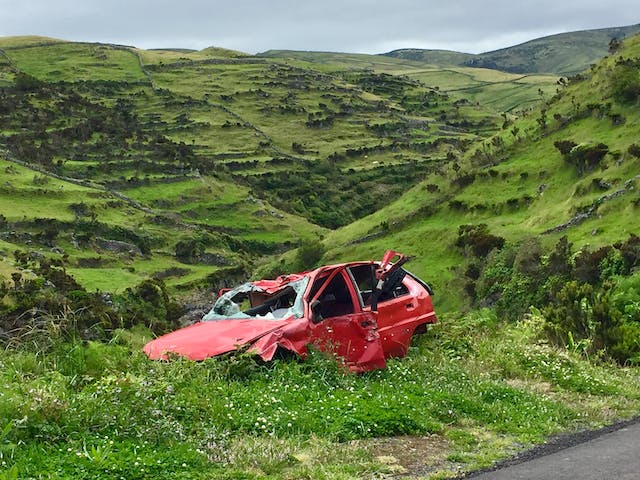
The advent of self-driving cars, also known as autonomous vehicles (AVs), promises to revolutionize transportation, offering unprecedented levels of convenience, efficiency, and safety. However, as this technology continues to evolve and integrate into our daily lives, it raises complex legal questions, particularly in the realm of liability in the event of an accident. Determining who is at fault in a collision involving an autonomous vehicle is a nuanced issue that requires careful consideration of various factors including technology, human intervention, and existing legal frameworks. This article delves into these complexities and explores the role of car accident lawyers in navigating the evolving landscape of legal liability in self-driving car accidents.
The Technology Behind Self-Driving Cars
Self-driving cars operate using a combination of sensors, cameras, and artificial intelligence (AI) to navigate and respond to their surroundings. They are designed to perceive the environment, make decisions, and execute actions without human intervention. The Society of Automotive Engineers (SAE) categorizes autonomous vehicles into six levels (0-5), based on the extent of automation and the role of the human driver. Level 5 represents fully autonomous vehicles that require no human input, while Level 0 denotes no automation.
Liability in Traditional Vehicle Accidents
In traditional vehicle accidents, liability is often determined based on negligence. Drivers are expected to exercise reasonable care on the roads, and failure to do so results in liability for any resulting damages. Car accident lawyers play a crucial role in investigating accidents, gathering evidence, and establishing liability to help victims secure compensation for their injuries and losses.
The Shift in Liability with Self-Driving Cars
The introduction of self-driving cars shifts the focus of liability from human error to potential product liability and questions of technological malfunction. In the event of an accident involving an autonomous vehicle, the question arises: is the driver, the manufacturer, or the software developer at fault?
– Driver’s Liability: In semi-autonomous vehicles (SAE Levels 2-3), drivers are required to remain attentive and ready to take control if necessary. Failure to do so could result in driver liability in the event of an accident.
– Manufacturer’s Liability: For fully autonomous vehicles (SAE Levels 4-5), liability may shift to the manufacturer if an accident is caused by a defect in the vehicle’s design or malfunctioning software.
– Software Developer’s Liability: If the vehicle’s AI system fails to respond appropriately in a certain situation, resulting in an accident, the software developer could be held liable.
Challenges in Determining Liability
Determining liability in self-driving car accidents presents unique challenges:
- Complex Technology: The intricate technology behind autonomous vehicles makes it difficult to pinpoint the cause of an accident. Was it a sensor malfunction, a software glitch, or an issue with the vehicle’s hardware?
- Data Access: Autonomous vehicles generate vast amounts of data, which can be crucial in determining liability. However, access to this data can be restricted, making it challenging for car accident lawyers and investigators to analyze the circumstances leading to the accident.
- Evolving Legal Frameworks: Existing laws and insurance policies are primarily designed for vehicles operated by humans. Adapting these frameworks to accommodate autonomous vehicles requires significant legislative changes.
- Ethical Considerations: Autonomous vehicles are programmed to make decisions in real-time, potentially involving ethical dilemmas. How these decisions are programmed and evaluated in terms of liability remains a contentious issue.
The Role of Car Accident Lawyers
Car accident lawyers are integral in navigating the complex legal landscape surrounding self-driving car accidents. They play a critical role in:
- Investigating Accidents: Lawyers help in gathering and analyzing evidence, including vehicle data, to determine the cause of the accident and establish liability.
- Advocating for Victims: They work tirelessly to ensure that victims of self-driving car accidents receive fair compensation for their injuries and losses.
- Shaping Legislation: Lawyers are involved in lobbying for and shaping laws and regulations that address the unique challenges posed by autonomous vehicles, ensuring that liability is fairly and accurately determined.
- Educating the Public: Car accident lawyers play a vital role in educating the public about their rights and the legal implications of self-driving cars, promoting informed and responsible use of this technology.
Conclusion
As self-driving cars continue to evolve and become more prevalent, the legal landscape surrounding their use must adapt accordingly. Determining liability in the event of an accident involving an autonomous vehicle requires a nuanced understanding of the technology, existing legal frameworks, and the roles of various parties involved. Car accident lawyers are at the forefront of navigating these complexities, advocating for victims, and shaping the future of legal liability in the age of self-driving cars. The journey towards a fully autonomous future is fraught with legal challenges, but with the expertise of car accident lawyers and proactive legislative action, a fair and just system of liability can be established to safeguard the rights of all parties involved.